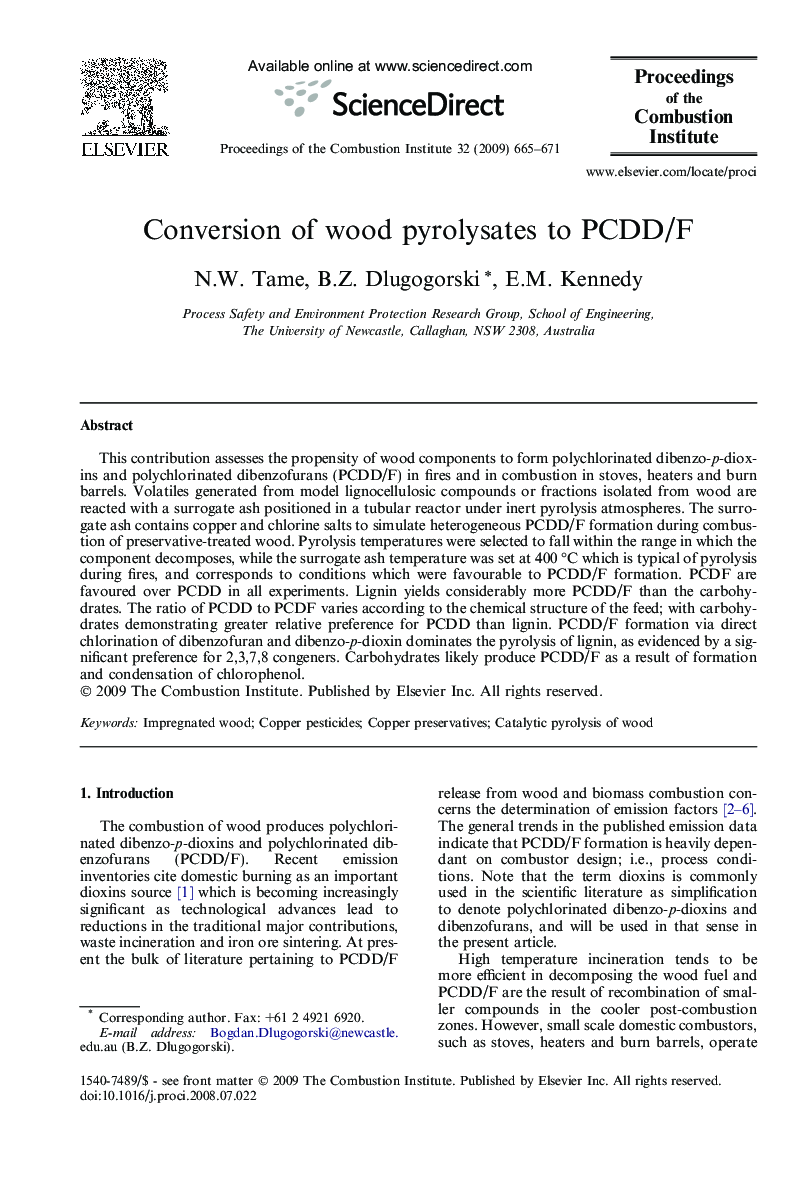| Article ID | Journal | Published Year | Pages | File Type |
|---|---|---|---|---|
| 6679460 | Proceedings of the Combustion Institute | 2009 | 7 Pages |
Abstract
This contribution assesses the propensity of wood components to form polychlorinated dibenzo-p-dioxins and polychlorinated dibenzofurans (PCDD/F) in fires and in combustion in stoves, heaters and burn barrels. Volatiles generated from model lignocellulosic compounds or fractions isolated from wood are reacted with a surrogate ash positioned in a tubular reactor under inert pyrolysis atmospheres. The surrogate ash contains copper and chlorine salts to simulate heterogeneous PCDD/F formation during combustion of preservative-treated wood. Pyrolysis temperatures were selected to fall within the range in which the component decomposes, while the surrogate ash temperature was set at 400 °C which is typical of pyrolysis during fires, and corresponds to conditions which were favourable to PCDD/F formation. PCDF are favoured over PCDD in all experiments. Lignin yields considerably more PCDD/F than the carbohydrates. The ratio of PCDD to PCDF varies according to the chemical structure of the feed; with carbohydrates demonstrating greater relative preference for PCDD than lignin. PCDD/F formation via direct chlorination of dibenzofuran and dibenzo-p-dioxin dominates the pyrolysis of lignin, as evidenced by a significant preference for 2,3,7,8 congeners. Carbohydrates likely produce PCDD/F as a result of formation and condensation of chlorophenol.
Related Topics
Physical Sciences and Engineering
Chemical Engineering
Chemical Engineering (General)
Authors
N.W. Tame, B.Z. Dlugogorski, E.M. Kennedy,
